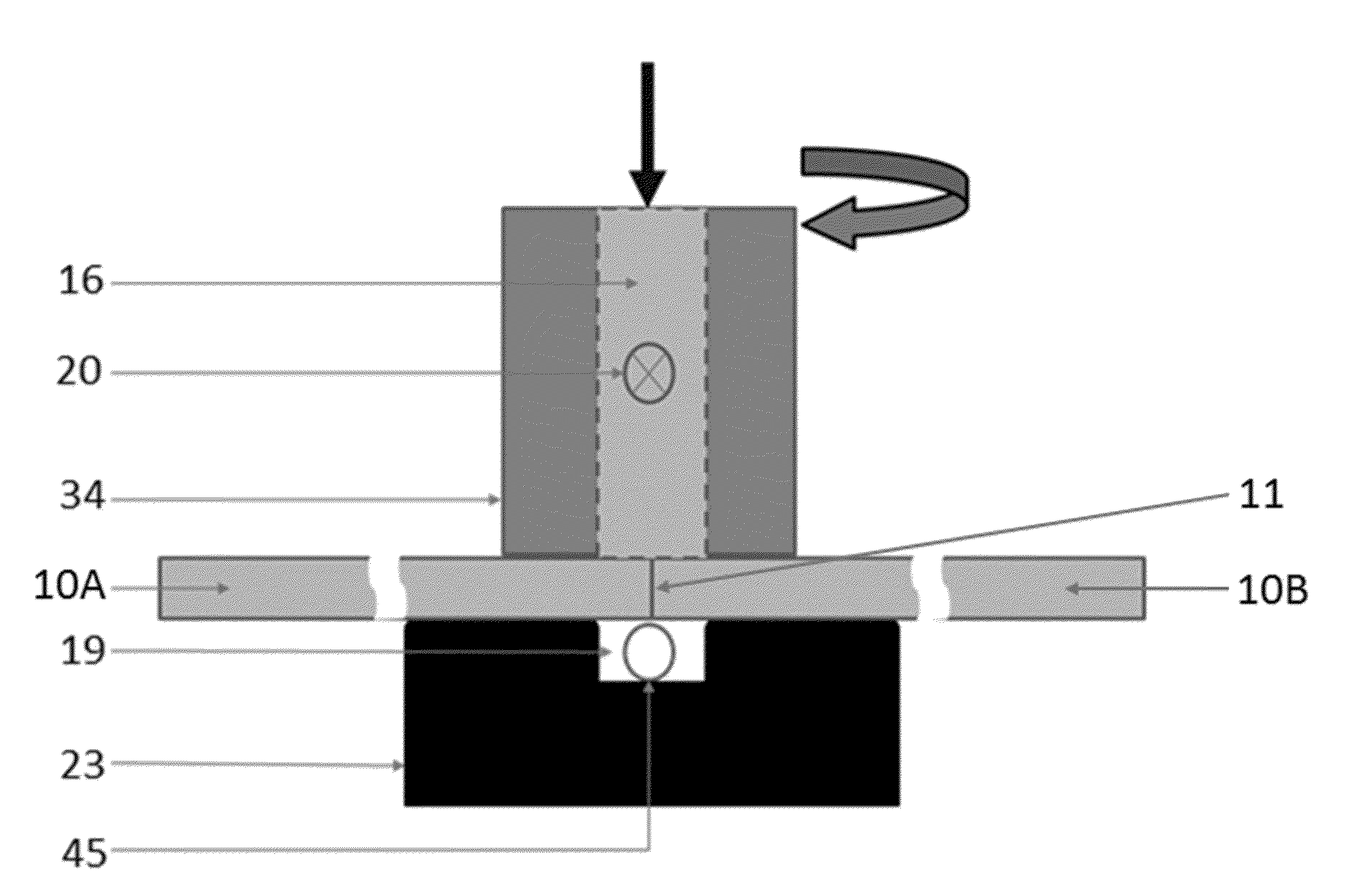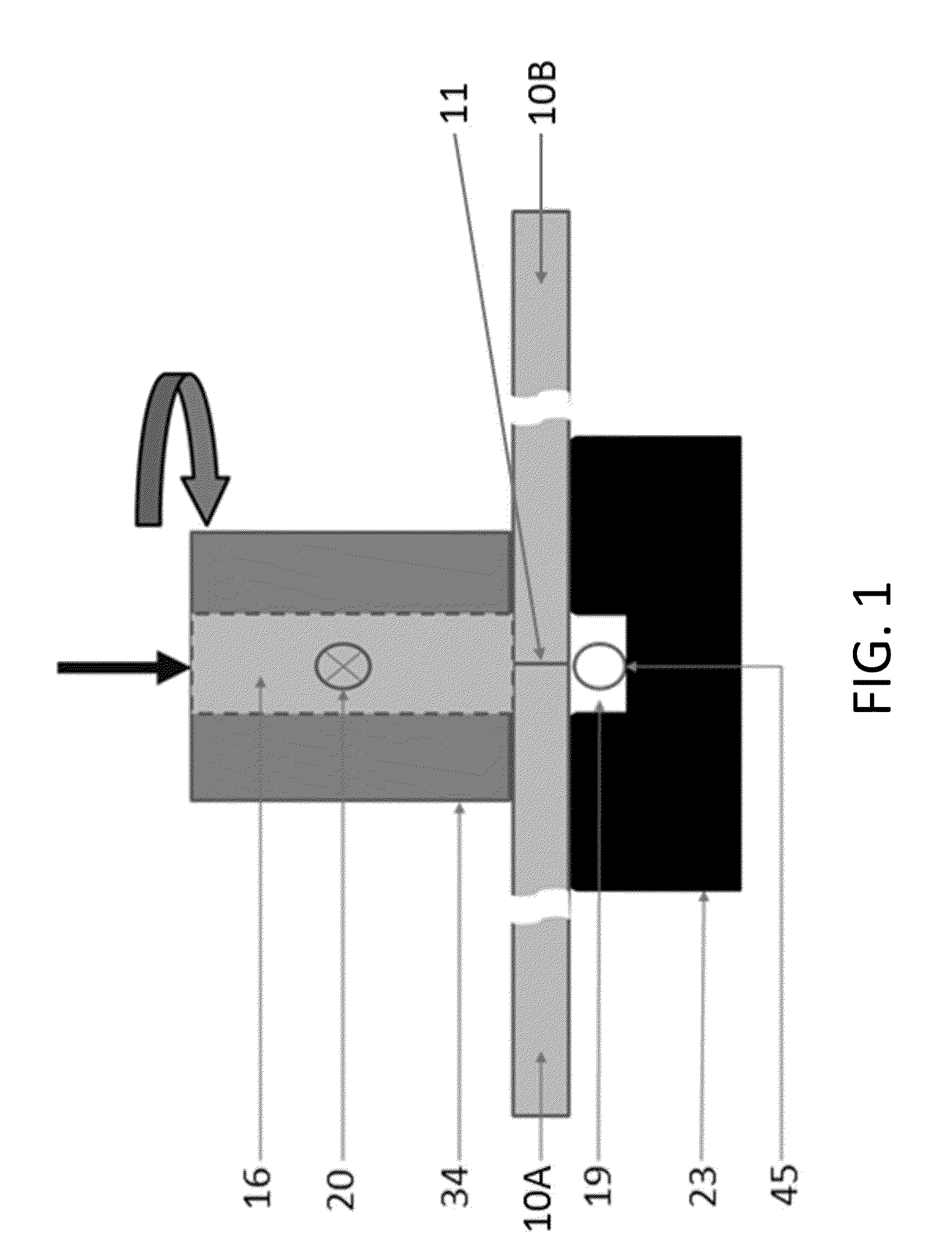Solid state joining using additive friction stir processing
a technology of additive friction stir and solid-state joining, which is applied in the direction of manufacturing tools, non-electric welding apparatuses, welding/soldering/cutting articles, etc., can solve the problems of limitless dimensions of stiffening ribs, and achieve high melting point, reduce galvanic corrosion, and reduce tool wear and breakage
- Summary
- Abstract
- Description
- Claims
- Application Information
AI Technical Summary
Benefits of technology
Problems solved by technology
Method used
Image
Examples
example
[0084]Photographs showing substrates joined using an embodiment of the additive friction stir methods of the invention as provided in FIGS. 8A-B, and 9. In particular, two HY-80 steel substrates were welded together with a filler material comprising HY-80. HY-80 steel is an alloy comprising several metals. Typically, HY-80 steel comprises on a percent by weight basis about 93-97% Iron (Fe), about 2-4% Nickel (Ni), about 1-2% Chromium (Cr), ≦ about 0.25% Copper (Cu), about 0.2-0.6% Molybdenum (Mo), about 0.15-0.35% Silicon (Si), about 0.12-0.18 Carbon (C), about 0.1-0.4% Manganese (Mn), ≦ about 0.025% Phosphorous (P), ≦about 0.025% Sulfur (S), ≦ about 0.020% Titanium (Ti), and ≦ about 0.030% Vanadium (V). The density of HY-80 steel is typically about 7.87 g / cc and the melting point is around 1424° C. FIG. 8A shows one side of the substrates joined and FIG. 8B shows the other side of the substrates facing in an opposing direction. As illustrated, the deposited filler material can be s...
PUM
| Property | Measurement | Unit |
|---|---|---|
| Deformation enthalpy | aaaaa | aaaaa |
Abstract
Description
Claims
Application Information
 Login to View More
Login to View More - R&D
- Intellectual Property
- Life Sciences
- Materials
- Tech Scout
- Unparalleled Data Quality
- Higher Quality Content
- 60% Fewer Hallucinations
Browse by: Latest US Patents, China's latest patents, Technical Efficacy Thesaurus, Application Domain, Technology Topic, Popular Technical Reports.
© 2025 PatSnap. All rights reserved.Legal|Privacy policy|Modern Slavery Act Transparency Statement|Sitemap|About US| Contact US: help@patsnap.com



